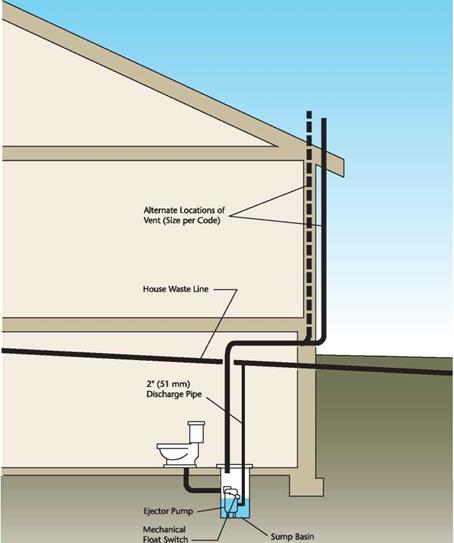Another below-grade option that eliminates the need for a pump and gives the environment a boost is the composting toilet. This fully self-contained toilet requires no water inlet, no connection to the sewer, and no chemicals in order to operate, but it does need an electrical connection and a vent to the outside. The composting toilet works much like a septic tank. About 90 percent of the waste material is actually water. A small electric heating grid and fan in the unit evaporate the liquids and send the vapor up the vent pipe. The solid waste material breaks down through normal bacterial action, converting it to a soil-type residue. The residue filters down to a collection tray at the bottom, which needs to be emptied about once a year. These units can operate very efficiently if the usage isn’t excessive, and odors should not be a problem if the toilet is operating properly.
Water Heaters
An adequate supply of hot water is essential for the bathroom, as well as other rooms in the home. Plan the hot water needs carefully to ensure that plenty of water will be available during peak use times, such as early in the morning, when many family members may be getting ready for the day.
 |
 |
How quickly hot water arrives to the bathroom fixtures can vary depending on the location of the water heater in relation to the bathroom. A somewhat common home design scenario is where the bathroom ends up on the opposite end of the house from, or two stories above, the home’s water heater. Not only does this make for a long time lapse before hot water reaches the bathroom fixtures, but a large amount of water is wasted while waiting for the hot water to arrive.
If this appears to be an issue, a second water heater located near the bathrooms, would be a good idea. A second water heater may also be recommended if your client wants to install a whirlpool type tub or multihead shower that require a large amount of hot water. Chapter 7, "Mechanical Planning" contains details on water heater selection.



